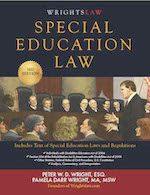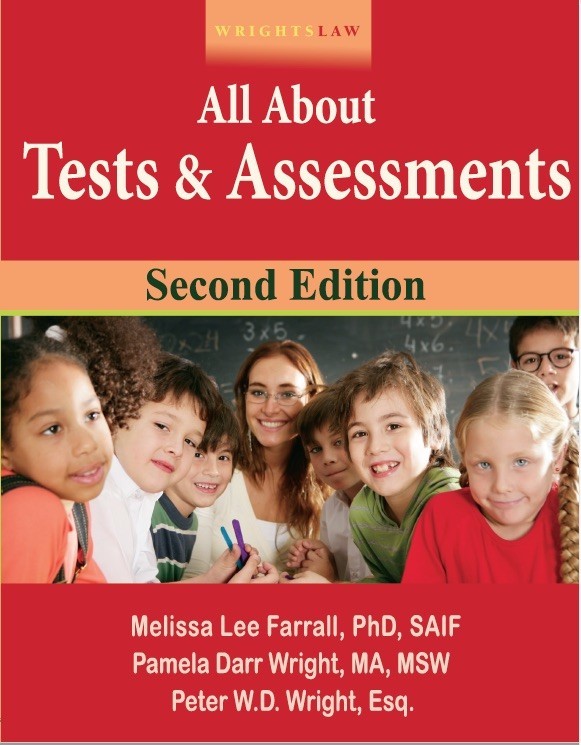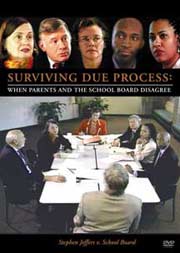|
Home
|
We publish this newsletter occasionally, when time permits. Back issues of The Special Ed Advocate are archived at our web site -
As a subscriber to The Special
Ed Advocate, you will receive announcements and "alerts" about
new cases and other events. Contact, copyright, and subscription
information can be found at the end of this newsletter.
(1) IDEA Regs Delayed Again
(2) Update on the Asbury ABA/Lovaas Case: Michael and Kathryn Asbury File Suit Against the Missouri Department of Education
(3) Plans for the Second Annual COPAA Conference
(4) More about our "Slideshow."
(5) Subscription information
(1) IDEA Regs Delayed Again - U. S. Department of Education Issues New Status Report
Judith Heumann says that "States are bound by the statute (IDEA 97) and existing regulations that are not inconsistent with IDEA 97 . . . States [are] expected to conduct monitoring of local School Districts based on the statute and existing regulations that are not inconsistent with IDEA 97 pending publication of the final regulations . . ."
To read the new "status report"
(2) $133,000.00 SETTLEMENT UPDATE on the Asbury ABA-Lovaas Case
BACKGROUND:
Daniel Asbury is a six-year-old child with autism. The school district placed Daniel into one of their class-based preschool programs. After two years, objective testing showed that Daniel regressed - he had actually lost skills.
After Daniel regressed in the district's preschool program, his parents pulled him out and began providing ABA therapy. In the ABA/Lovaas therapy program, Daniel receives 40 hours of intensive 1:1 therapy a week. Just before the due process hearing, the case was settled for $133,000, including damages and attorneys fees.
There is no objective evidence that the public school’s typical class-based preschool programs work for children with autism. Yet, school districts around the country continue to place young autistic children into these ineffective programs. States have a responsibility to ensure that school districts use programs that are research based and effective. Thus, the Asbury’s now have a case pending against the state.
UPDATE:
On June 12, Michael and Kathryn Asbury filed suit in Federal Court against the Missouri department of education. To learn why, read the press release from Mary Jane White and Ken Chackes, attorneys for the parents.
To read the Settlement Agreement between Michael and Kathryn Asbury and the St. Louis [MO] School District.
(3) The Second Annual COPAA Conference will be held in San Diego on January 29-31, 1999. BE THERE!
To learn more about plans for the Second Annual COPAA Conference, go to the Wrightslaw site.
(4) OUR NEW SLIDESHOW
Recently, we posted a PowerPoint slideshow that is taken from slides that we use during our presentations. We use slides to help parents, advocates, and attorneys develop an understanding of tests and measurements. It becomes a visual demonstration and evidence of educational progress or lack of progress. Graphs are another example of how to use tactics and strategy at IEP meetings and in due process hearings to get the services that the children need.
At the beginning of the show, you'll see the test scores we used to make the graphs as both standard scores and percentile ranks. We took the child's standard scores, made a graph of that data. Next, we converted the standard scores to percentile ranks and made graphs of the data. Then we took that graph and simply duplicated it several times. In order to isolate the reading, we then deleted all data but the reading percentile ranks. For the next graph, example-writing, we deleted all data except the writing percentile ranks. In other words, we started with a master graph and then duplicated it, and deleted all data except for one educational skill area. These graphs show that the child was not making much progress. The graphs became evidence in one of our cases. Enjoy!
| |||||
|
|
|||||
|
Copyright © 1998-2025, Peter W. D. Wright and Pamela Darr Wright. All rights reserved. Contact Us | Press l Mission l Our Awards l Privacy Policy l Disclaimer l Site Map |
|||||




